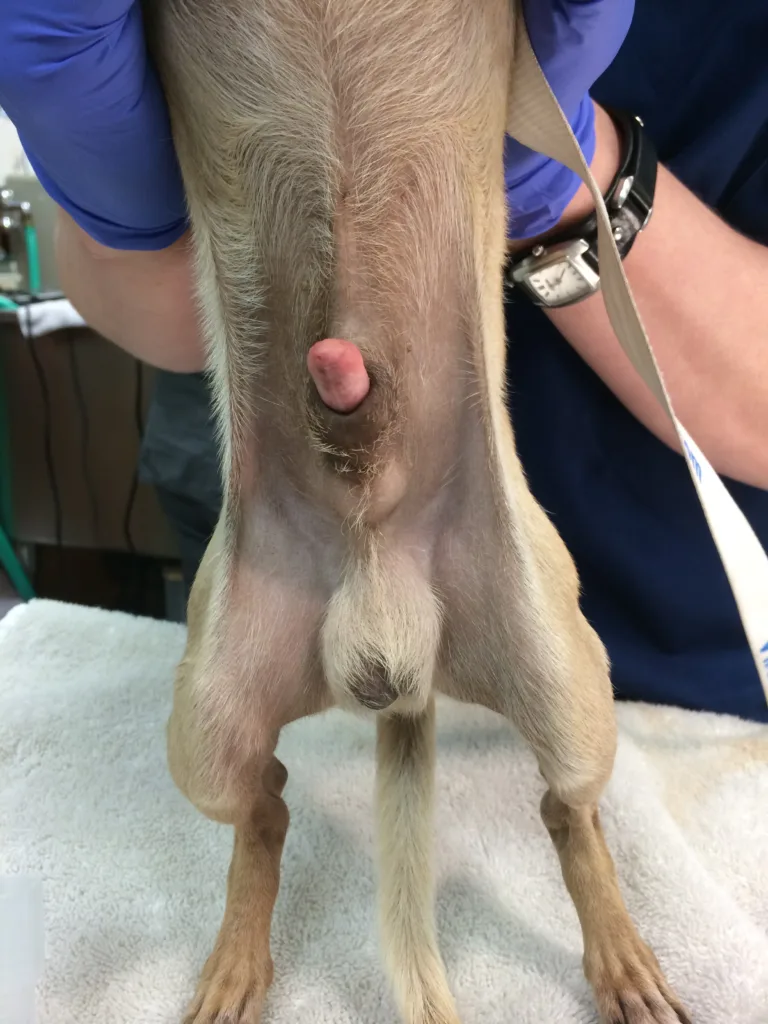Paraphimosis is a medical condition that can affect male dogs, causing discomfort and potentially leading to more severe complications if left untreated. As a responsible dog owner, it is essential to be aware of the signs of paraphimosis, the potential causes, and the appropriate steps to take if you suspect your dog is suffering from this condition. In this article, we will explore what paraphimosis looks like in dogs, whether it can be fixed at home, how long it can persist, and how to help your dog when dealing with paraphimosis.
For more about dogs click here
What is Paraphimosis in Dogs?
Paraphimosis is a condition where the male dog’s penis becomes trapped outside the protective sheath called the prepuce and cannot be retracted back inside. The prepuce is a fold of skin that covers the penis in its flaccid state and protects it from irritation and injury.
When paraphimosis occurs, the penis remains exposed and cannot be retracted, causing swelling and constriction of blood flow to the penis. This condition can be painful and potentially dangerous if not addressed promptly.
What Does Dog Paraphimosis Look Like?
Paraphimosis is visually apparent in dogs and can be recognized by the following symptoms:
- Visible and Swollen Penis: The most apparent sign of paraphimosis is the swollen and exposed appearance of the dog’s penis. The penis may be bright red or purplish in color due to the lack of blood flow.
- Inability to Retract the Penis: The dog will be unable to retract the penis back into the prepuce. Attempts to do so may cause discomfort and further swelling.
- Pain and Discomfort: Paraphimosis can be painful for the dog, and they may show signs of distress or discomfort, such as licking or biting the affected area.
- Difficulty Urinating: The swelling and constriction of the penis can lead to difficulty in urination. The dog may strain or appear distressed while trying to urinate.

Can Paraphimosis in Dogs be Fixed at Home?
Paraphimosis is a medical emergency that requires immediate attention from a veterinarian. It cannot be fixed at home using home remedies or without proper medical intervention. Delaying treatment can lead to severe complications, such as tissue damage, infection, or necrosis (tissue death).
If you suspect that your dog is suffering from paraphimosis, do not attempt to manipulate or force the penis back into the prepuce, as this can cause further injury. Instead, seek immediate veterinary care for proper diagnosis and treatment.
How Long Can a Dog Have Paraphimosis?
The duration of paraphimosis in dogs can vary depending on the underlying cause and how quickly the condition is addressed. In some cases, paraphimosis can resolve on its own if the swelling decreases and the penis can be retracted back into the prepuce. However, it is crucial not to wait for the condition to resolve spontaneously, as it can lead to complications.
If paraphimosis is not treated promptly, it can persist and worsen over time, leading to tissue damage and potential infection. Therefore, it is vital to seek immediate veterinary care once you notice the symptoms of paraphimosis in your dog.
How Can I Help My Dog with Paraphimosis?
If you suspect that your dog is suffering from paraphimosis, follow these steps to help your pet before seeking veterinary care:
- Keep Your Dog Calm. Avoid stressing or exciting your dog, as this can worsen the swelling and discomfort. Keep your pet calm and in a quiet environment.
- Clean the Area. Gently clean the exposed penis and surrounding area with a damp cloth to remove any debris or dirt.
- Prevent Licking or Biting. Place an Elizabethan collar (cone) around your dog’s neck to prevent them from licking or biting the affected area, which can lead to further irritation.
- Seek Veterinary Care: Paraphimosis is a serious condition that requires immediate attention from a veterinarian. Contact your veterinarian or an emergency veterinary clinic as soon as possible for proper diagnosis and treatment.
FAQs (Frequently Asked Questions)
1. What causes paraphimosis in dogs?
Paraphimosis in dogs can be caused by various factors, including prolonged or excessive sexual activity, trauma to the penis, infections, foreign bodies, or underlying medical conditions affecting the prepuce.
2. Can paraphimosis in dogs resolve on its own?
In some cases, paraphimosis can resolve on its own if the swelling decreases and the penis can be retracted back into the prepuce. However, it is essential not to wait for spontaneous resolution and seek immediate veterinary care.
3. Can I manually retract my dog’s penis if it’s stuck outside the prepuce?
No, attempting to manipulate or force the penis back into the prepuce can cause further injury and should not be done. Paraphimosis is a medical emergency that requires professional veterinary care.
4. Will my dog need surgery for paraphimosis?
The treatment for paraphimosis in dogs will depend on the severity and underlying cause of the condition. In some cases, the veterinarian may be able to reduce the swelling and manually retract the penis. However, in more severe cases or if there are complications, surgery may be necessary to address the issue.
5. Can paraphimosis lead to serious complications in dogs?
Yes, if left untreated, paraphimosis can lead to serious complications, including tissue damage, infection, and necrosis. It is essential to seek immediate veterinary care once you notice the symptoms of paraphimosis in your dog.
Conclusion
Paraphimosis is a medical emergency that requires immediate veterinary attention. If you suspect that your dog is suffering from paraphimosis, do not attempt to treat the condition at home and seek professional veterinary care. Prompt diagnosis and treatment can prevent complications and ensure your dog’s swift recovery. As a responsible pet owner, it is essential to monitor your dog’s health closely and seek medical attention whenever you notice any changes or signs of distress.
Click here for more
